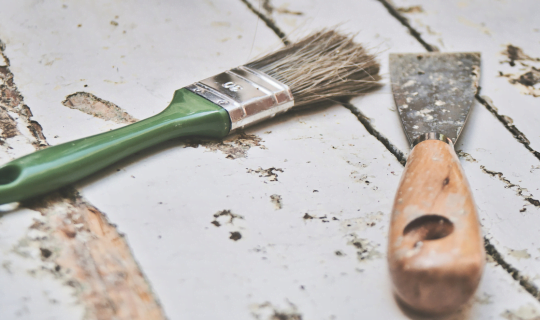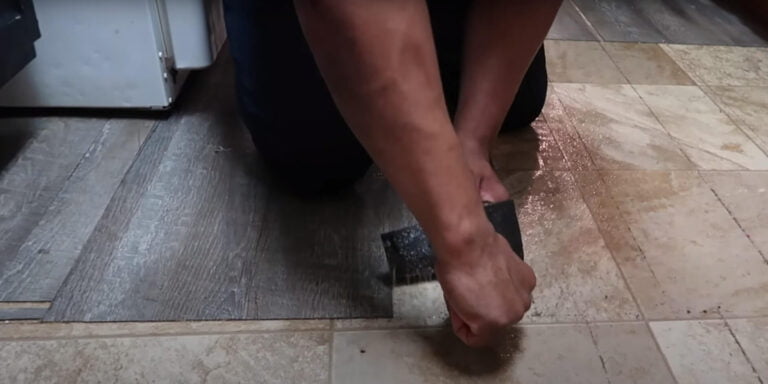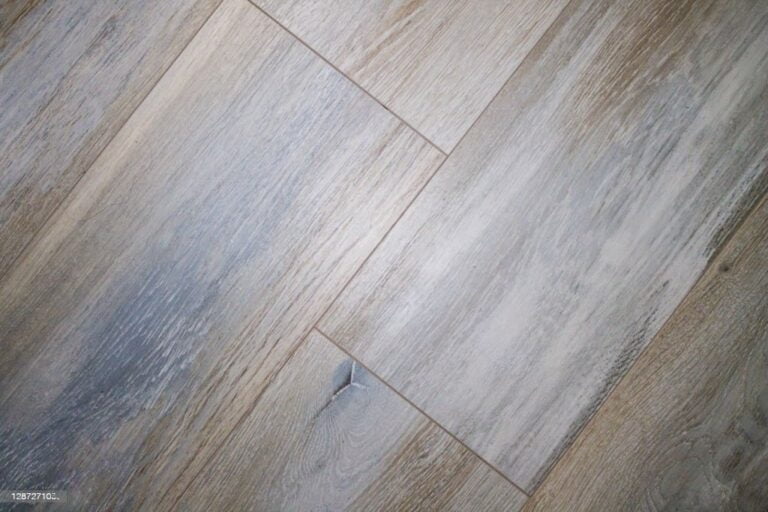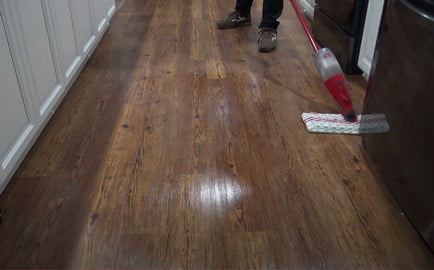Comprehensive DIY Guide: Paint Removal from Vinyl Floors
Effortlessly remove paint from your vinyl floors with our comprehensive guide. Find detailed methods for dealing with latex, dry, and oil-based paints. Make your home improvement tasks easier!

Vinyl flooring is a popular choice in many homes due to its durability, aesthetic appeal, and cost-effectiveness. However, maintaining its pristine condition can be a challenge, especially when it comes to removing paint. This comprehensive guide will provide you with detailed instructions on how to effectively remove different types of paint from your vinyl flooring.
Key Takeaways
- IIdentify the Type of Paint: The first step in any paint removal process is to identify the type of paint. Latex, dry, or oil-based paints each require a different approach for effective removal.
- Use the Right Tools and Materials: Depending on the type of paint, you’ll need different tools and materials. This may include warm water, a plastic scraper, mineral spirits, or acetone nail polish remover.
- Regular Maintenance is Key: To keep your vinyl flooring looking its best, regular cleaning with the right products is essential. Immediate clean-up of spills can prevent staining, and using protective coverings in areas where heavy objects are placed can prevent damage. Check out our guide on vinyl flooring cleaning and maintenance for more tips.
- Avoid Common Mistakes: Not wearing protective gloves, using the wrong cleaning products, not buffing the floor after cleaning, using the wrong type of paint, and not allowing enough time for the paint to dry before walking on it are common mistakes to avoid.
Introduction
Vinyl flooring has been a staple in homes for decades, offering a durable and cost-effective solution for high-traffic areas. Its versatility and wide range of designs make it a popular choice for homeowners. However, like any flooring, it can become stained or damaged over time. One of the most common issues homeowners face is paint spills. Whether from a home renovation project or an artistic endeavor gone awry, paint can leave a noticeable and unsightly stain on your vinyl flooring. But fear not, with the right tools and techniques, you can remove these paint stains and restore your vinyl flooring to its former glory.
Understanding Vinyl Flooring
Before we delve into the specifics of paint removal, it’s important to understand the nature of vinyl flooring. Vinyl is a type of resilient flooring, a category that also includes linoleum and cork. It’s known for its durability, offering a hard-wearing surface that can withstand heavy foot traffic. It’s also water-resistant, making it a good choice for rooms such as kitchens and bathrooms.
Vinyl flooring comes in two main types: sheet vinyl and luxury vinyl tile. Sheet vinyl is typically more water-resistant and is easier to install, but vinyl tiles offer more design options and can be easier to replace if a section becomes damaged.
Despite its durability, vinyl flooring can be susceptible to damage from sharp objects, heavy furniture, and certain substances. Paint, in particular, can be a problem if it’s not cleaned up promptly. The longer the paint sits on the vinyl, the harder it will be to remove.
Essential Tools and Materials
Removing paint from vinyl flooring requires a few essential tools and materials. Having these on hand before you start the process can make the task easier and more efficient.
Tools
- Plastic Scraper: A plastic scraper is a vital tool for removing dried paint. It’s effective at scraping off the paint without scratching or damaging the vinyl flooring.
- Soft Cloth or Sponge: You’ll need a soft cloth or sponge for applying solvents and for cleaning the area after the paint is removed. It’s a good idea to have several on hand, as you’ll need a clean one for each step of the process.
- Superfine Steel Wool Pad: For stubborn or oil-based paints, a superfine steel wool pad can be useful. It can help to gently scrub away the paint without causing damage to the vinyl.
- Rubber Gloves: Protect your hands from harsh solvents and paint strippers by wearing rubber gloves.
- Eye Protection: If you’re using solvents or paint strippers, it’s a good idea to wear safety glasses to protect your eyes from potential splashes.
Materials
- Warm Water: Warm water can help to soften latex paint, making it easier to remove.
- Mild Detergent: A mild detergent is useful for cleaning the area after the paint is removed. It can help to remove any residue from the solvent or paint stripper.
- Solvent or Paint Stripper: Depending on the type of paint, you may need a solvent or paint stripper. Acetone or nail polish remover can be effective for oil-based paints, while rubbing alcohol or mineral spirits can work for latex paints.
- Citrus-Based Cleaner: For a less harsh alternative to solvents, a citrus-based cleaner can be effective at removing paint. It’s also useful for cleaning the area afterwards.
- Drop Cloth or Protective Covering: If you’re working with a large area or want to protect the surrounding flooring, a drop cloth or other protective covering can be useful.
Remember, safety is paramount when working with solvents and paint strippers. Always work in a well-ventilated area and wear protective equipment. If you’re unsure about any step of the process, don’t hesitate to consult a professional.
How to Remove Different Types of Paint from Vinyl Flooring
The process of removing paint from vinyl flooring varies depending on the type of paint. Here are the steps for each type:
Removing Latex Paint
Latex paint, also known as acrylic or water-based paint, is a popular choice for many painting projects due to its easy application, quick drying time, and easy clean-up. However, if it ends up on your vinyl flooring, it can leave a noticeable stain. Here’s how to remove it:
- Identify the Type of Paint: The first step in any paint removal process is to identify the type of paint. If the paint is still wet, it’s easier to determine its type. Latex paint has a rubbery consistency when wet and will often peel off in a single strip when dry.
- Remove Excess Paint: Use a clean, dry cloth to blot as much of the wet paint as possible. Be careful not to rub or scrub as this can spread the paint further into the vinyl.
- Use a Damp Cloth: If the paint has dried, dampen a cloth with warm water and gently rub the paint stain. The moisture can help to soften the paint, making it easier to remove.
- Apply a Solvent: For stubborn spots, use a soft cloth and a solvent such as rubbing alcohol or mineral spirits. Always test the solvent on an inconspicuous area of the floor first to ensure it won’t damage the vinyl.
- Clean the Area: Once the paint is removed, clean the area with a damp cloth and a mild detergent to remove any residue from the solvent.
- Dry the Area: Dry the area thoroughly to prevent any moisture damage to the vinyl flooring. Use a dry cloth or a fan to speed up the drying process.
Removing Dry Paint
Dry paint, especially when it has been left to cure for a long time, can be a challenge to remove. Here is a detailed guide to help you through the process:
- Identify the Stain: Ensure that the stain on your vinyl flooring is indeed dry paint. Dry paint will have a hard, brittle consistency and will not come off easily with water.
- Rub Off Excess Paint: Use a dry cloth or a plastic scraper to gently rub off the excess paint. Be careful not to scratch the vinyl flooring.
- Apply a Solvent or Chemical Stripper: Apply a solvent or chemical stripper to the paint. These products are designed to break down the paint, making it easier to remove. Always follow the manufacturer’s instructions and use in a well-ventilated area.
- Scrape Away the Paint: Use a plastic razor blade or a plastic scraper to gently scrape away the paint. Be careful not to dig into the vinyl as this can cause damage.
- Apply a Citrus-Based Cleaner: Apply a citrus-based cleaner to the paint and wipe it away with a dry cloth. These cleaners are less harsh than chemical strippers and can be effective at removing paint.
- Clean the Area: After the paint removal process is complete, wipe down the area with a clean cloth and a mild detergent to remove any residue.
Removing Oil-Based Paint
Oil-based paint is known for its durability and resistance, which makes it an excellent choice for many painting projects. However, these same properties can make it a challenging substance to remove, especially from surfaces like vinyl flooring. Here is a detailed guide to help you remove such stubborn oil-based paint stains from your vinyl flooring:
- Identify the Stain: Ensure that the stain on your vinyl flooring is indeed oil-based paint. Oil-based paint has a glossy finish when dry and is resistant to water.
- Apply Acetone: Dampen a superfine steel wool pad with acetone nail polish remover and use it to rub the paint off the surface. Be sure to use a superfine pad to avoid scratching the vinyl.
- Scrub the Stain: Use the dampened pad to gently scrub the paint off the surface. Be patient and avoid using too muchpressure as this can damage the vinyl.
- Clean the Area: Once the paint is removed, clean the area with a damp cloth and a mild detergent to remove any residue from the acetone.
- Inspect the Area: Finally, inspect the area to ensure no further damage is done to the vinyl flooring. If any paint remains, repeat the process.
Tips and Tricks for Effective Paint Removal
When tackling a paint removal project on vinyl flooring, there are several approaches that can yield successful results. Here are some tips and tricks to help you along the way:
- Use the Right Tools: Having the right tools can make a big difference in the success of your paint removal project. A plastic scraper, for instance, can help you remove dried paint without scratching the vinyl.
- Test Solvents First: Before applying any solvent or paint stripper to the paint stain, always test it on an inconspicuous area of the floor first. This can help you avoid causing further damage to the vinyl.
- Be Patient: Paint removal can be a time-consuming process, especially if the paint has been left to dry for a long time. Be patient and avoid the temptation to rush the process, as this can lead to damage.
- Use Protective Equipment: When using solvents or paint strippers, always wear protective gloves and work in a well-ventilated area. These substances can be harmful if they come into contact with your skin or are inhaled.
- Clean the Area Thoroughly: After the paint is removed, it’s important to clean the area thoroughly to remove any residue from the solvent or paint stripper. This can help to restore the shine to your vinyl flooring.
Maintaining Your Vinyl Flooring
Regular maintenance is essential for preserving the longevity and appearance of vinyl flooring. Here are some tips to help you keep your vinyl flooring looking its best:
- Clean Regularly: Regular cleaning can help to prevent dirt and grime from building up on the surface of the vinyl. Use a mild detergent and warm water to clean the floor, and always dry it thoroughly afterwards to prevent water damage.
- Use Protective Coverings: If you’re painting or doing other messy activities, use a drop cloth or other protective covering to protect your vinyl flooring. This can help to prevent paint spills and other stains.
- Deal with Spills Promptly: If a spill does occur, clean it up as soon as possible to prevent the substance from staining the vinyl. The longer a substance is left on the vinyl, the harder it will be to remove.
- Avoid Harsh Chemicals: Avoid using harsh chemicals or abrasive cleaning tools on your vinyl flooring. These can cause damage to the vinyl and dull its shine.
- Use Furniture Pads: Heavy furniture can cause dents and scratches in vinyl flooring. Use furniture pads under the legs of heavy furniture to distribute the weight and prevent damage.
Frequently Asked Questions
In Summary,
In summary, vinyl flooring offers an economical and stylish solution for many flooring needs. With proper removal and painting, it can be a durable and attractive addition to any space. With the right materials and tools, the job can be done quickly and easily, allowing for a beautiful floor that can last for many years. With proper care and maintenance, vinyl flooring can provide an attractive, durable, and economical choice for any home or office space. For more information on the lifespan of vinyl flooring, you can check out our article on how long does vinyl flooring last.
If you’re considering painting your vinyl floor, we have a comprehensive guide on can you paint vinyl flooringto help you understand the process and the precautions to take.
And if you’re wondering about the best cleaning methods for your vinyl floor, especially when it comes to steam cleaning, we’ve got you covered. Check out our article on can you use a steam mop on vinyl flooring for all the details.
Remember, maintaining your vinyl flooring is just as important as installing it. With the right care, your vinyl floor can look as good as new for many years to come.




